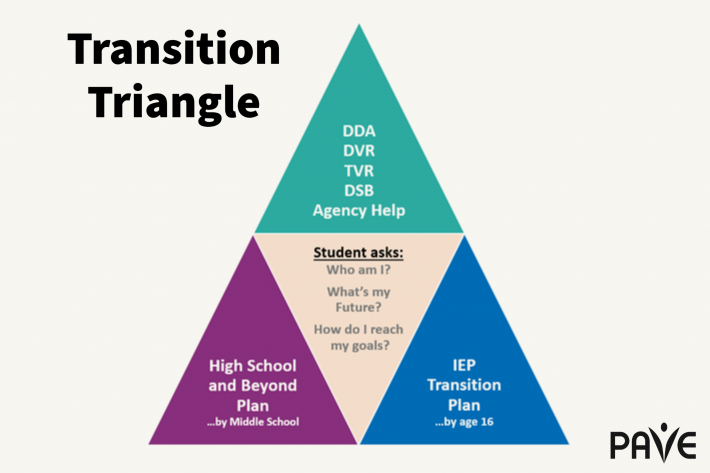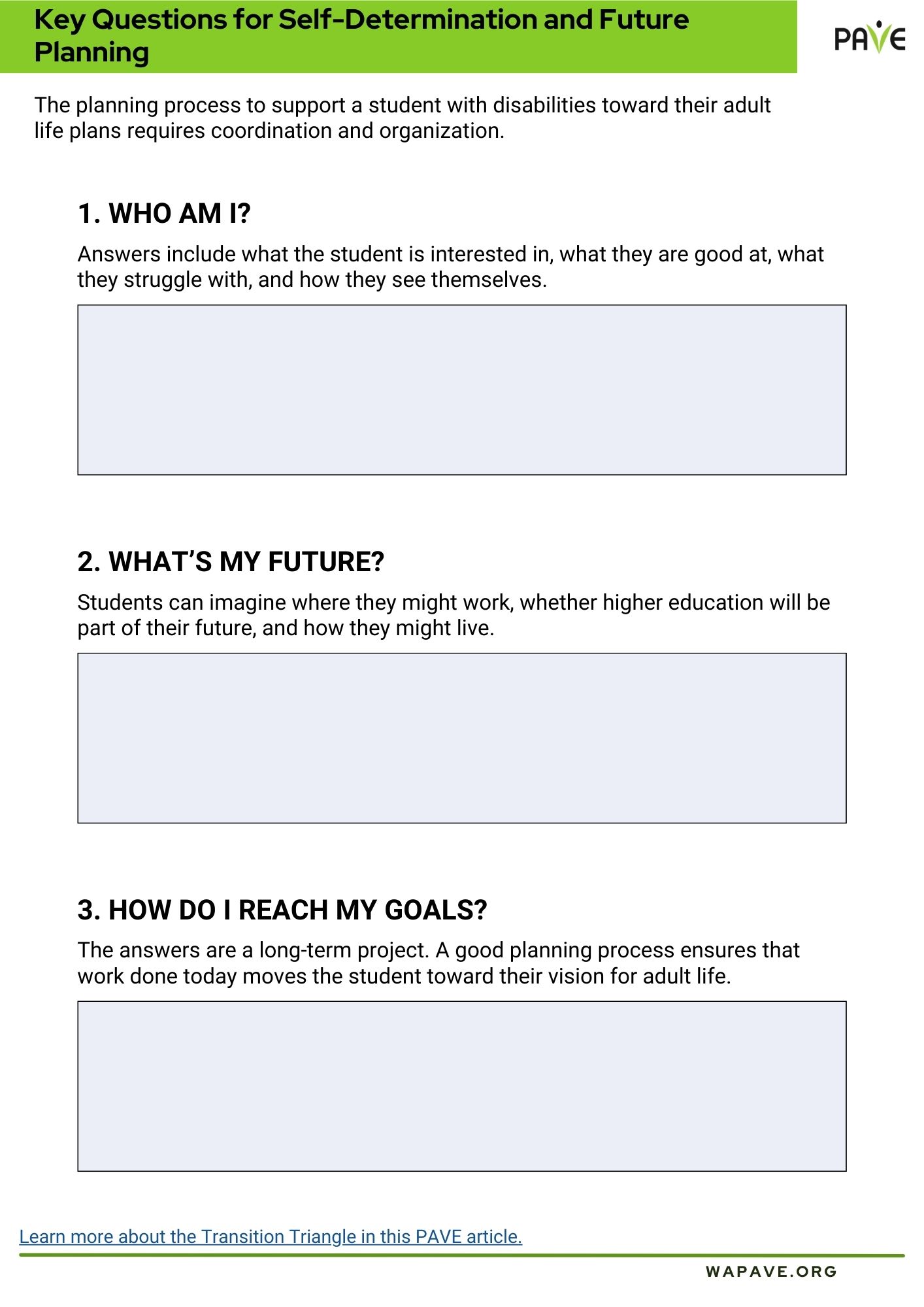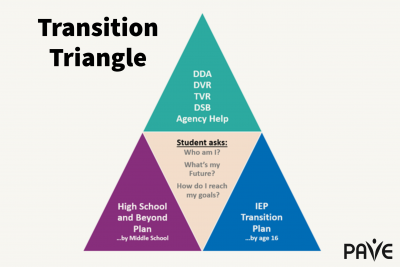
The planning process to support a student with disabilities toward their adult life plans requires coordination and organization. This graphic provides a visual overview of the work and who is responsible to help.
The center upside down triangle describes key questions for a student as they move through school and toward adulthood:
- Who am I? Answers include what the student is interested in, what they are good at, what they struggle with, and how they see themselves.
- What’s my future? Students can begin to imagine where they might work, whether higher education will be part of their future, and how they might live.
- How do I reach my goals? The answers are a long-term project. A good planning process ensures that work done today is moving the student toward their vision for adult life.
The three colored triangles on the corners of the graphic represent three tools that help students ask and answer these questions.
The purple triangle on the bottom left represents the High School and Beyond Plan. Washington State requires schools to begin supporting all students with a High School and Beyond Plan before they leave middle school. The plan includes questions to help the student think about where they might work someday and how much education they will need to get that job. The plan is designed to make sure time spent in school is moving the student toward adult goals. The High School and Beyond Plan addresses the same questions that are listed in the center of our triangle and is often managed by staff in a school’s counseling center.
The blue triangle on the bottom right represents the transition plan, which is required in a student’s Individualized Education Program (IEP) by the school year when they turn 16. Goals in the IEP Transition Plan include further education/training, employment, and independent living as parts of a student’s program. A student with disabilities has the right to a Free Appropriate Public Education (FAPE) until they earn a diploma or turn 21. The IEP includes a target graduation date, determined by the IEP team. The state requires the IEP Transition Plan to align with the High School and Beyond Plan. School staff and the family collaborate to make sure these two tools match up to best support a student’s progress.
The teal triangle on top of the pyramid represents agencies that might provide Vocational Rehabilitation (VR) services. The Developmental Disabilities Administration (DDA) has a variety of school-to-work programs for eligible students: A DDA case manager can provide information about options. The Division of Vocational Rehabilitation (DVR) provides Pre-Employment Transition Services (Pre-ETS) for students still in school as well as vocational rehabilitation services for adults with disabilities. As they transition out of school, members of some Native American tribes may access Tribal Vocational Rehabilitation (TVR) services. The Department of Services for the Blind (DSB) is a separate agency providing Pre-ETS for youth and vocational rehabilitation services for individuals who are blind or low vision. Staff from these agencies may work with an IEP team and counselors at school to make sure everyone is working together to support the student in the center.
Ideally a student with disabilities has people supporting all of the features on this transition triangle. Best practice is for all agencies and supporters to collaborate as they help a student move toward a successful adult life.
PAVE has made a fillable worksheet to help you answer these questions.

In addition, PAVE has a college readiness workbook ready for you to use. For direct assistance from PAVE, click Get Help. The Office of Superintendent of Public Instruction (OSPI) provides information about graduation requirements for a student in Washington State

